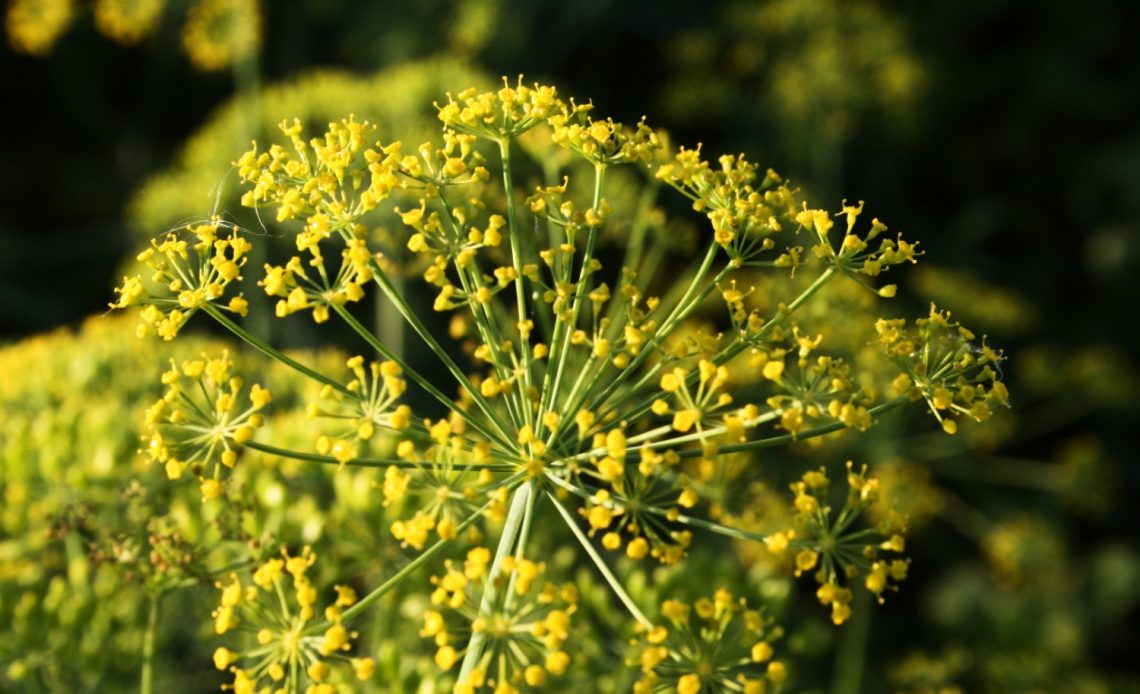

We’re here to help! Wild Yards is a completely free website that is 100% dedicated to helping you create a wildlife-friendly, sustainable yard. Read more
WildYards is reader-supported. When you buy a product through a link on our site, we may earn a comission. Every product is independently selected by our (obsessive) editors and our reviews are unbiased and objective. Read more about our mission or our privacy policy.
If you grow cucumbers to can your own pickles, then you’re probably familiar with dill. A member of the celery family Apiaceae, dill (Anethum graveolens) is a popular choice for culinary herb gardens. However, it’s sometimes grown as an ornamental thanks to its delicate yellow flowers and fern-like foliage. If you’ve got a plant in your garden that you think might be dill, but you’re just not sure, you may be surprised to learn that there are several plants that look like dill. Since dill has so many lookalikes, it can be helpful to know which plant is which!
Chervil, thyme, tarragon, anise, cumin, and fennel are some of the most commonly grown herbs that resemble dill. Certain medicinal herbs, like chamomile and wormwood, are often confused with dill as well.
10 Plants that look like dill but aren’t
Dill is one of those self-sufficient herbs that grows very well on its own. Just plant your dill in full sun and in moist but well-draining soil, and the plants will thrive. Dill is a cool weather-loving annual that self-seeds quite well. It has a distinctive citrusy sweet flavor with pungent undertones of anise. This makes it a favorite among professional chefs and home cooks alike.
There are several varieties of dill to choose from, but the two most popular are Bouquet and Fernleaf. Bouquet is a favorite among pickle lovers, as its seeds and foliage are an ideal spice for canning. The stems of Bouquet dill grow around 5 feet tall, and it has nice large leaves. Fernleaf dill, on the other hand, is much more compact, reaching heights of about 2 feet. This type of dill works best in cooking.
If you’re new to growing herbs, you may be having trouble telling them apart. Here are 10 plants that look like dill, but actually aren’t. Being able to identify them will help you label your garden and use each herb appropriately.
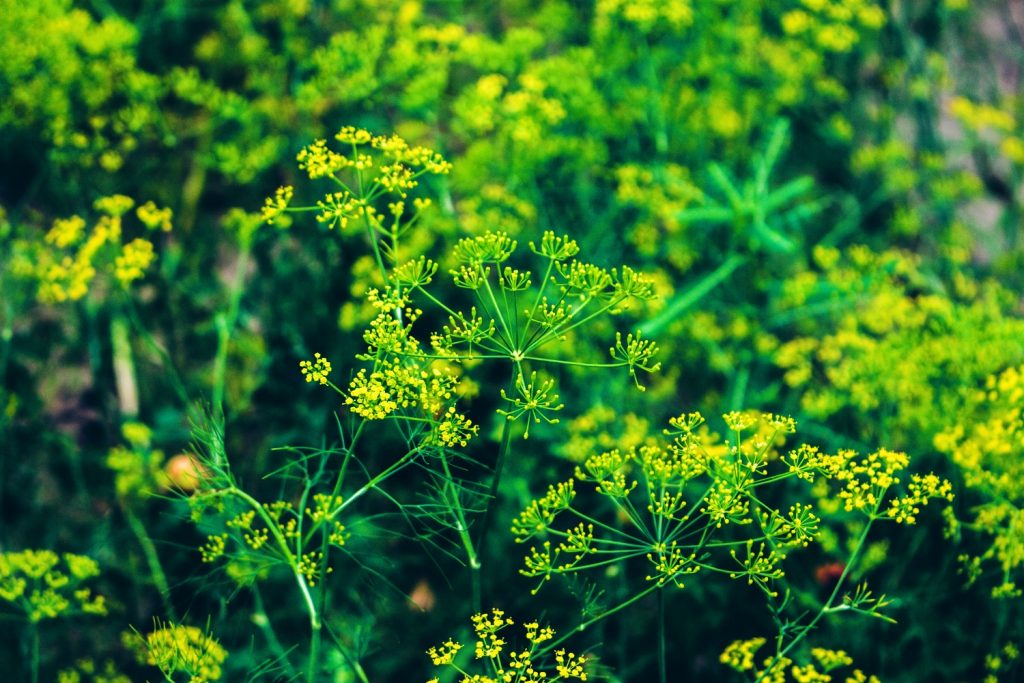
Fennel (Foeniculum vulgare)
Of all of the plants on this list, fennel resembles dill the most. Fennel has fern-like leaves and long stems that grow around 5 feet tall, just like Bouquet dill. When fennel blooms in the late summer months, it’s easy to confuse the plant’s yellow flowerheads for dill. The two plants even taste a lot alike. But, for all of their similarities, there are some striking differences between these two herbs.
Fennel is one of several perennials that look like dill — and, in fact, they’re related. Fennel is also a member of the Apiaceae family. But, unlike dill, fennel grows from bulbs. If you pull a sprig up from the ground, you’ll see a white bulb at the base of the plant, similar in appearance to garlic, green onions, or bok choy. If you can’t uproot a plant to determine whether it’s dill or fennel, then the next best way to tell them apart is by flavor.
Although the two plants have similar flavor profiles, they aren’t entirely the same. Dill has hints of anise, but with an undeniably, yet not overwhelmingly, bitter taste. Fennel is slightly milder with licorice undertones. While dill is well-suited to seasoning pickles, sauces, and condiments, fennel tastes best when used in salads, soups, and stews.
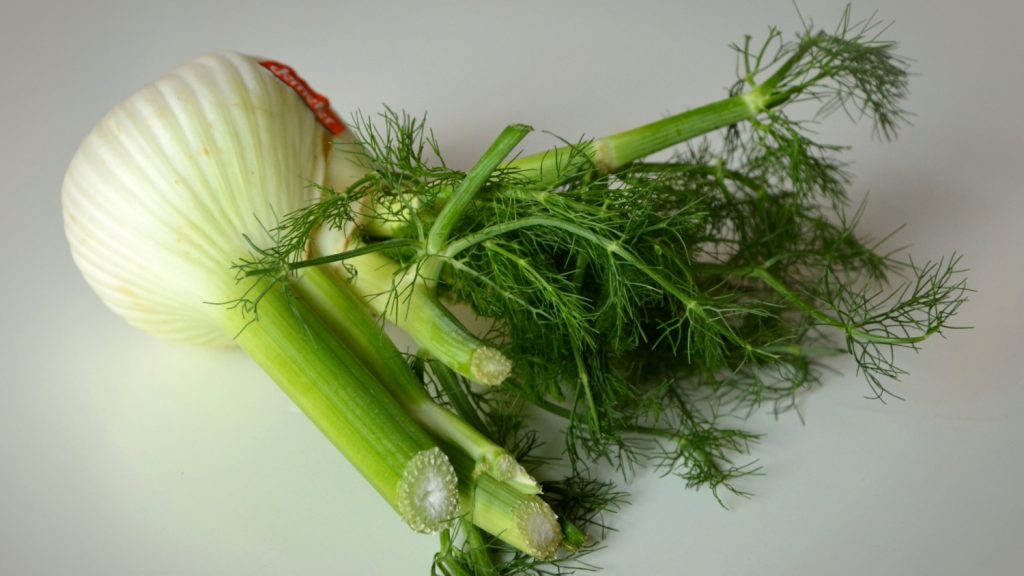
Cumin (Cuminum cyminum)
Another member of the family Apiaceae, cumin may look like dill, but that’s where the similarities end. For starters, the two taste completely different. Cumin is a warming spice, ideal for seasoning beans, casseroles, chilis, and curries. It’s a far cry from the refreshing flavor of dill. Additionally, while dill’s aromatic foliage is typically harvested, cumin is grown for its flavorful seeds.
Cumin has lacey, feathery leaves, so it can easily be confused for dill at first glance. It’s worth noting that cumin’s flowerheads, while similar in shape to dill, are usually white, pink, or blue. This annual herb is also similar in size to Fernleaf dill, maxing out at around 2 feet. Like fennel, cumin grows best in warmer growing zones, so it may not thrive in areas where dill can.
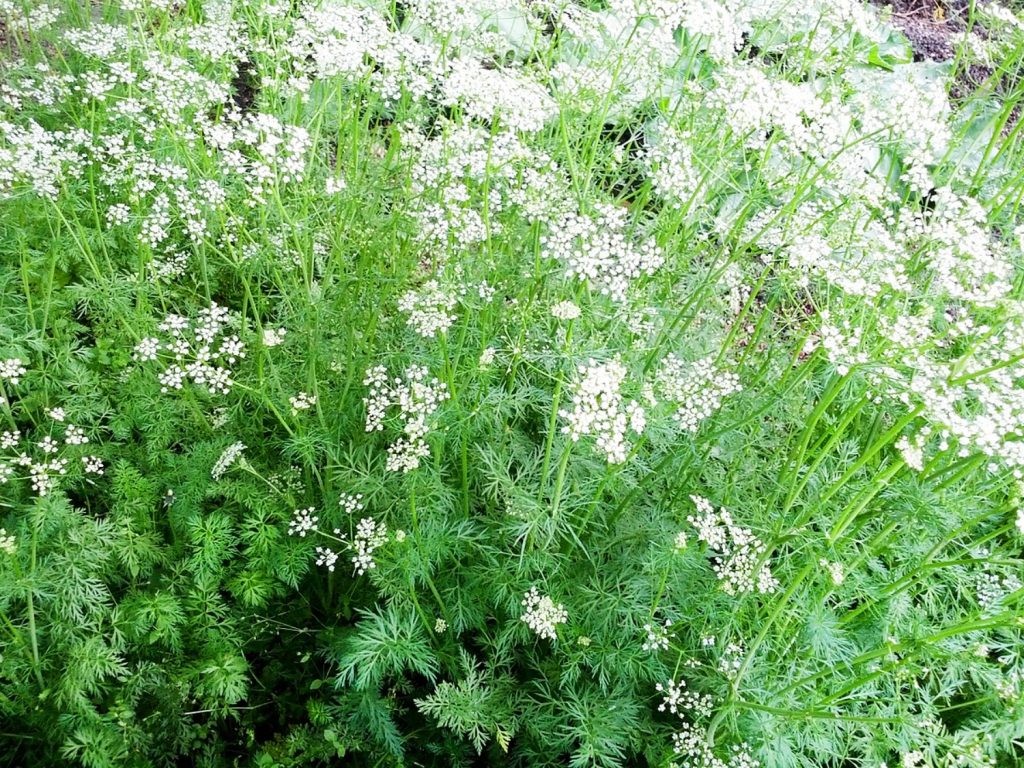
Anise (Pimpinella anisum)
If you’re new to gardening, then anise plants may look like dill to you. A closer look will show you that they’re actually pretty different. Anise is an annual herb with long oval leaves. Plants grow dense and shrub-like at the base, sending long stems up into the air, reaching heights of 3 feet. Plants produce flat-topped, rounded flower clusters in shades of white and yellow. As with cumin, anise is generally grown for its distinctive star-shaped seeds.
As a fellow member of the family Apiaceae, anise’s flavor profile is unsurprisingly similar to dill’s. But once you’ve tasted the two, it’s easy to tell the difference between them. Remember, dill is citrusy and slightly bitter. Anise, by comparison, is sweet, strong, and licorice-like. Anise is ideal for use in baked goods and other sweet treats; dill would be wildly inappropriate for flavoring desserts.
Thyme (Thymus vulgaris)
Thyme plants look like dill to the untrained eye, but thyme is a member of the Lamiaceae family and a close relative of mint. So although young plants may resemble dill slightly, mature thyme plants have a low-growing nature that distinguishes them from dill.
Thyme only reaches 6 to 12 inches, although some varieties can reach 2 feet if all of their growing conditions are met.
Thyme is a woody, perennial evergreen that spreads easily, whether you grow it from seeds or cuttings. As with dill, thyme is harvested for its aromatic foliage. Leaves and stems can be used fresh or dried, and are ideal for seasoning fish, meats, stews, and vegetables. It tastes earthy and woody, with undertones of lemon and mint. Compared to dill, thyme is more bitter and less sweet.
Once you’ve tasted thyme and dill, you aren’t likely to confuse one for the other. But another thing that separated these two herbs is flower color. Dill blossoms are typically yellow, and the flowerheads spread outward from a central point. Thyme, on the other hand, produces white, pink, and purple flowers that bloom at the tips of woody stems, similar to French lavender and Russian sage.
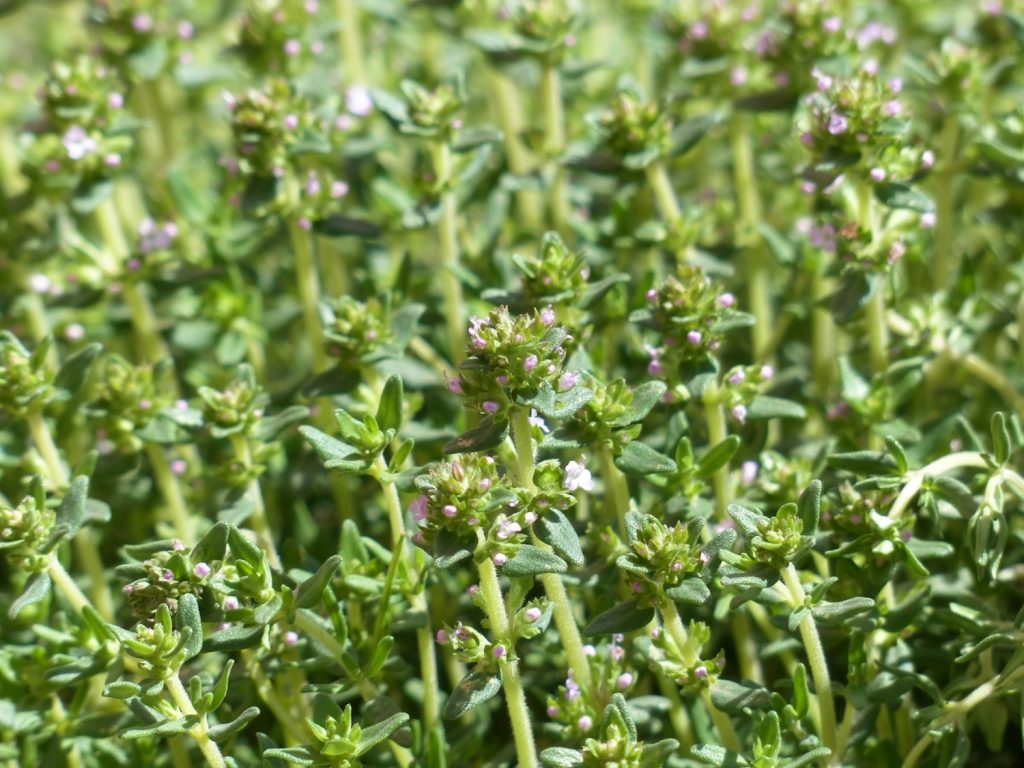
Chervil (Anthriscus cerefolium)
Chervil is an annual herb with delicate frond-like leaves that resemble parsley, celery, and, of course, dill. Also called French parsley, chervil’s white flowerheads are sometimes mistaken for dill. Chervil typically grows 2 feet high at the most, similar to Ferneaf dill.
While dill’s flavor could be described as “robust”, chervil’s foliage is far more delicate. It has a mild taste, with undertones of licorice, mint, and lemon. Chervil’s subtle flavor makes it well-suited to egg, fish, and poultry dishes. It’s also used to season a variety of sauces.
Chervil grows best in partially shady locations when planted in well-draining soils. Although chervil and dill share some of the same growing requirements, dill is hardier than chervil, which makes it better suited to sunnier herb gardens.
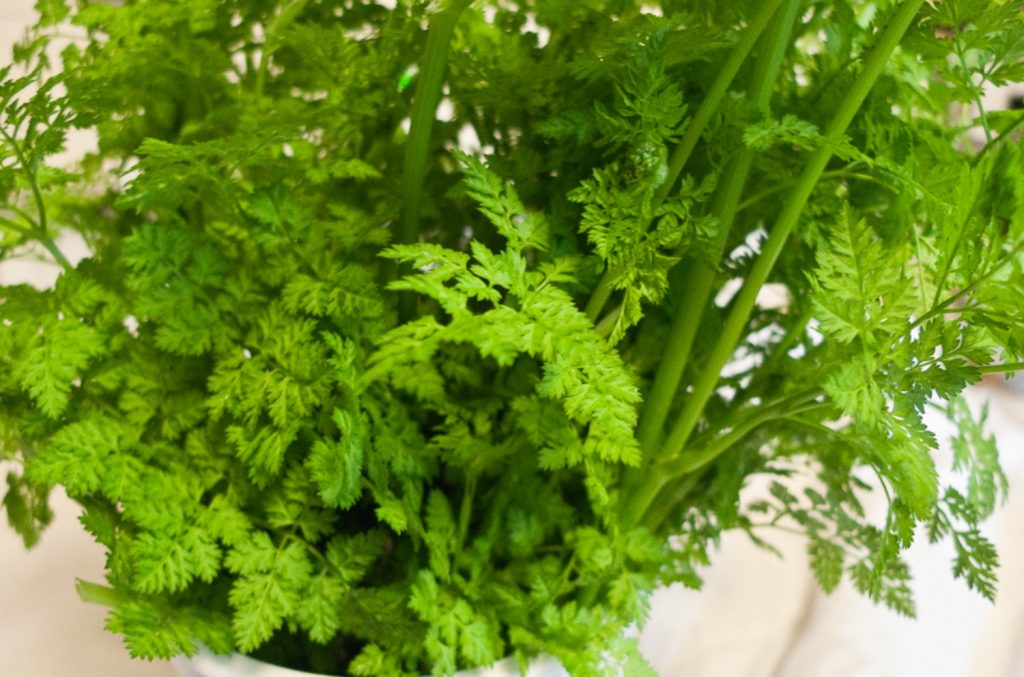
Tarragon (Artemisia dracunculus)
Tarragon is a member of the Asteraceae family, which makes it a relative of the marigold, the sunflower, and the daisy. As such, it produces small individual composite flowerheads with petals arranged around a center medallion. Tarragon is a perennial herb that matures to heights of 4 to 5 feet tall. Its needle-like leaves and long, spindly nature means it’s often mistaken not only for dill but also for rosemary.
Often, plants that look like dill don’t taste or smell like dill. But with tarragon, the opposite is the case. This herb is easy enough to distinguish from dill upon closer inspection of the foliage, but both herbs taste similar. Tarragon and dill have a sweet, slightly bitter flavor, with anise and licorice undertones. However, tarragon is commonly used to season sauces, marinades, and stews rather than pickles, salads, and condiments.
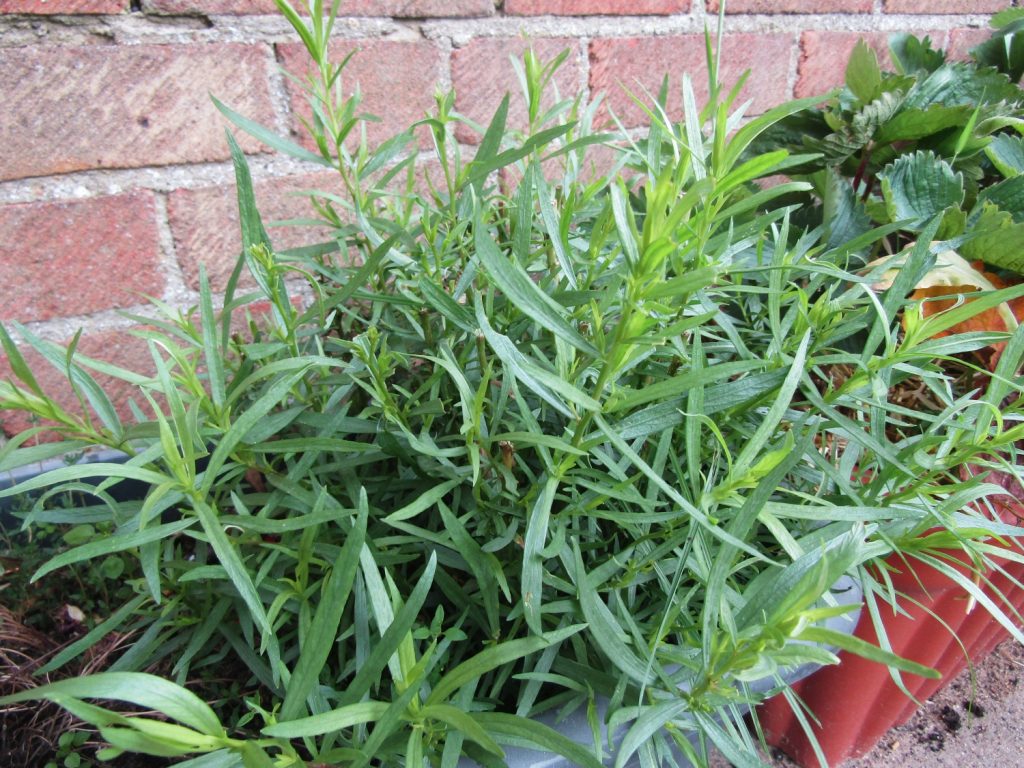
Caraway (Carum carvi)
Compared to caraway, dill is hardier. Although both plants can grow in full sun, caraway can be pretty picky about which types of soil it likes. If its growing conditions are not met, it cannot reach its maximum height of 2 to 3 feet tall. The plants may also fail to bloom, and if their small white and pink flowerheads go unpollinated, caraway plants may not produce many seeds — which are harvested to use in cooking and baking.
Caraway is a biennial plant, another member of the Apiaceae family. Also known as meridian fennel and Persian cumin, caraway has a sweet, slightly bitter flavor. Although caraway has a pungent aroma, it has a milder taste than dill. Caraway is often used to season bread, cheeses, soups, sauces, and, perhaps most notably, sauerkraut.
The caraway plant’s fern-like leaves and delicate stems mean it’s frequently mistaken not just for Fernleaf dill, but also for fennel and other relatives of the carrot. Interestingly, caraway leaves are somewhat toxic and can cause gastrointestinal symptoms like nausea and vomiting when ingested.
Salem Rosemary (Rosemarinus officinalis ‘Salem’)
Salem rosemary is a perennial evergreen that matures at 2 to 3 feet tall. Its needle-like leaves and linear growth pattern make it look similar to dill. However, Salem rosemary has a blue tint to its foliage, unlike the bright kelly green of dill. Rosemary also produces blue, white, purple, or pink flowers situated along the tips of its stems, rather than the small dome-shaped yellow flowerheads that are characteristic of dill. Rosemary’s delicate fragrance makes it a hit with bees too.
In terms of taste, Salem rosemary has a potent flavor with undertones of mint and sage. Salem rosemary is often used to dress up meat and potato dishes, as well as sauces and soups. This variety of rosemary is especially popular because it has a pleasant taste and a manicured appearance that makes it suitable for a variety of landscapes.
Like thyme, Salem rosemary belongs to the family Lamiaceae. It’s closely related to sage, salvia, bee balm, basil, and lavender, as well as a variety of other culinary herbs. While Salem rosemary may be confused for dill, it’s a much hardier plant, thriving in sandy, well-draining soils, full sunlight, and hot climates.
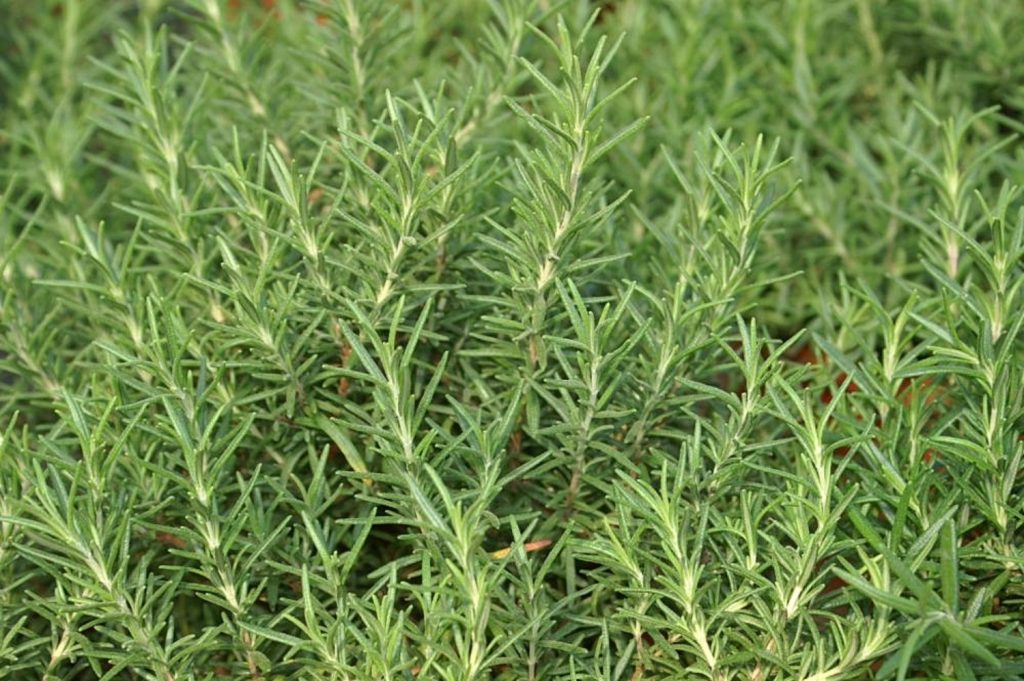
Wormwood (Artemisia absinthium)
Wormwood is also known as absinthe, and it’s used to create the famous alcoholic spirit of the same name. This perennial is a member of the Asteraceae family and grows roughly 2 to 4 feet tall. Plants produce yellow, drooping flowers that dot the ends of long stalks, and feathery, frond-like leaves. When they bloom in late summer, these plants look a lot like dill.
Wormwood isn’t really a culinary herb, although it is used to flavor a variety of alcoholic beverages, including wine, vermouth, bitters, and mead. This herb is used medicinally to treat gastrointestinal symptoms like indigestion and even Crohn’s disease. Backyard chicken breeders sometimes use wormwood sprigs to line nesting boxes because it’s so effective at repelling lice and mites.
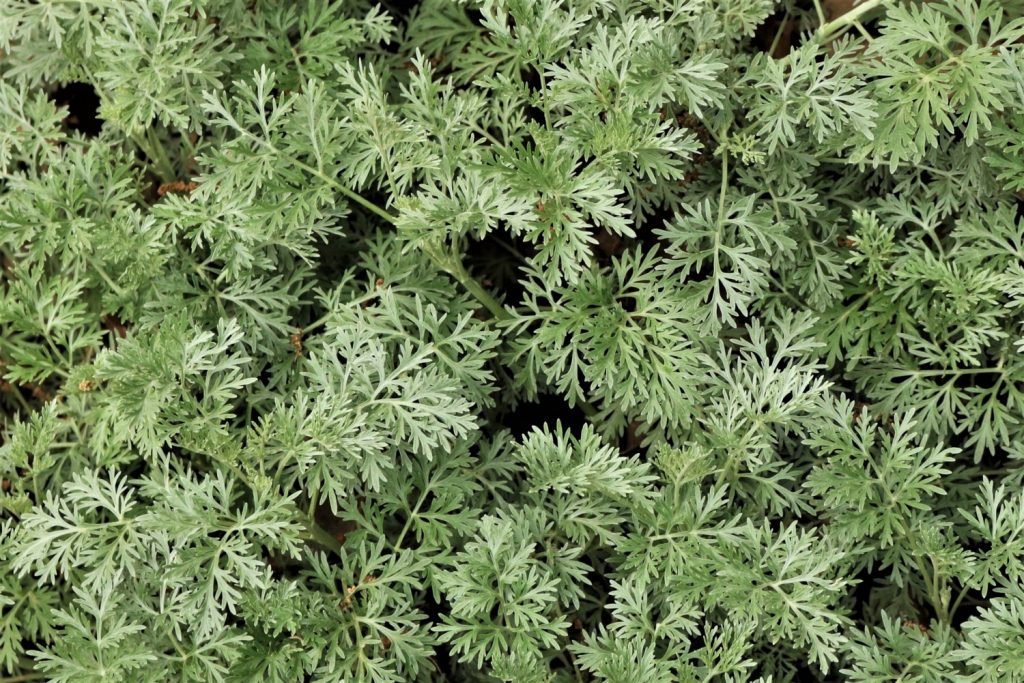
Chamomile (Chamaemelum nobile)
Like wormwood, chamomile isn’t really used in cooking. Its flavor is so mild, high temperatures would destroy it. Chamomile is usually made into a tea and is used to treat anxiety, insomnia, and a variety of stomach issues. Another reason many gardeners grow chamomile is its fragrance. It’s very popular in aromatherapy.
Chamomile’s lace-like foliage makes it look a lot like dill. Only when chamomile blooms does it become easy to distinguish between the two. As a member of the Asteraceae family, chamomile produces small daisy-like blooms, with petals surrounding a central medallion. Chamomile also has a low-growing nature, so it doesn’t get nearly as tall as dill. Even at its most unkempt, this perennial only grows about a foot above the ground.
Tips for identifying plants that look like dill
If you’re new to herbs and you’re still confused about which ones are which, take a visit to a local nursery and familiarize yourself with the fragrances and appearances of common garden herbs. You can also find fresh sprigs of a variety of herbs in the produce section of your grocery store to get accustomed to their different tastes.
There are a number of plants that look like dill, and most of them are edible. However, it’s not out of the realm of possibility that a toxic plant might resemble dill. So always be sure what kind of plant you’ve harvested before using it.
